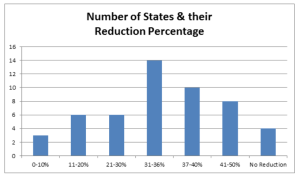The Clean Power Plan, President Obama’s environmental plan that would greatly reduce climate change caused by carbon pollution from power plants if passed, is sitting in limbo. The plan was introduced in 2015, but the Supreme Court stopped implementation in this past February. The plan is currently on the back burner until the next president is elected and a ninth Supreme Court Justice (to take Antonin Scalia’s place) is approved next year.
The EPA developed the Clean Power Plan in 2015 with the intentions of reducing the carbon emissions that are produced from power plants, in an attempt to stop climate change from occurring so rapidly.
“The Clean Power Plan is an initiative setting limits on emissions of power plants. Because power plants will be regulated on the amount of carbon pollution, there is (lesser) chance of temperature increase, natural disasters, and sea level rise,” said Alexis Cunningham, a student at Cabrini College.
The Clean Power Plan will develop state-by-state goals for carbon emissions reductions, forcing larger power plants to use renewable energy instead. These reduction goal percentages are different for each state, and they are created based on the best systems of emissions reduction BSER.

The BSER follows “building blocks,” which helps formulate each state’s goal. These building blocks include making coal-powered power plants more energy efficient and using renewable power instead.
According to the Clean Power Plan, each state has an emissions goal to meet before the end of 2030. Some states, such as Vermont, Hawaii and Alaska do not have goals for emissions reduction, while other states’ percentages for change are as high as 50 percent. Targets differ across states because of each state’s different use of resources, and also because of technological feasibilities, costs, and emissions reduction potentials of each state.
“I think this is a fantastic idea because it allows states a cleaner, more energy-efficient economy, beginning to steer away from fossil fuel dependence, ” Cunningham said.
So if the Clean Power Plan is passed, what does the future of climate change look like?
“This plan will change future generations because it gives them an opportunity to live in a beautiful world. Taking greener and cleaner initiatives now will drive future generations to remain environmentally sound, continuing the journey to combat climate change,” Cunningham said.
The Clean Power Plan is estimated to help cut carbon pollution by 30 percent by 2030 which is about 730 million metric tones of carbon pollution. In addition to environmental benefits, the Plan will is also expected to cause health benefits as well. The Clean Power Plan will reduce pollutants that add soot and smog (contaminates in the air that make people sick) into the atmosphere by over 25 percent in 2030
“We have a moral obligation to leave our children a planet that’s not polluted or damaged. The effects of climate change are already being felt across the nation…In fact, 14 of the 15 warmest years on record have all occurred in the first 15 years of this century and last year was the warmest year ever…Taking action now is critical.”-President Obama


